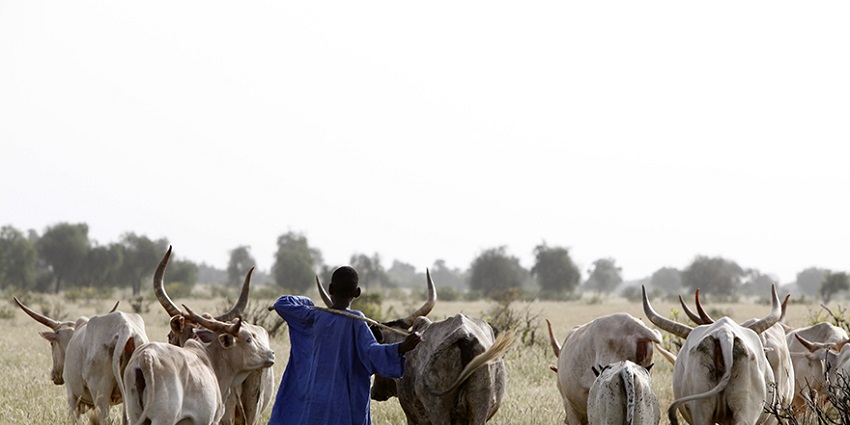By Jonathan Michaud, CA Franche Comté

The rationale of the Laiterie du Berger
Processing milk collected from Fula stockbreeders in the Richard Toll region in the North of Senegal has been part of the business plan of the Laiterie du Berger (LDB) from its very beginning in 2008. The Fula people are nomadic stockbreeders who have always produced milk, mainly for consumption on the farm, considered as a by-product of a suckler herd. The LDB aspires to turn this milk into a full-fledged production to be sold and generate stable income for the household.
This powerful idea of an integrated and sustainable development through the marketing of an agricultural output by a social business company brought together many initiatives around the LDB which are being pursued by stakeholders in research, development or by the LDB itself. Although they at times suffer from a lack of coherence, all these actions have nonetheless made it possible to draw many lessons and thus contribute to the premises of a real territorial dynamism around milk product. The Laiterie du Berger and its shareholders wanted to capitalize and enhance this rich experience at this time to embark on a new stage of development for the milk sector in Senegal.
An ambitious partnership to develop the milk sector in Senegal
Alongside the Grameen Crédit Agricole Foundation, the regional bank of Crédit Agricole Franche-Comté wanted to invest so as to guide and support the LDB in this exciting project. A support mission was consequently carried out against this background under a skills-based volunteering programme: “Solidarity Banker by CA.” The aim is to chart a development plan for the dairy sector aimed at reconciling the needs of the Laiterie du Berger, its social impact, and the expectations of the stockbreeders and the territory.
The action plan proposed after two weeks of work was endorsed by the Board of Directors of the Laiterie du Berger last June. It is the outcome of a collaborative effort with the teams of the LDB and the Foundation, and consultations with the other shareholders, capitalizing on past experience and taking advantage of the analysis of the principal stakeholders.
The mini-farm: point of entry of the strategic plan
The action plan comprises two phases. First, the plan is to deploy 15 mini farms to try and test the model while building the necessary material and immaterial conditions (forage harvesting method, stockbreeding advice, training for farmers, structuring for stakeholders). Then, in a second phase, the plan is to deploy 100 mini farms gradually throughout the territory to reach a larger number of stockbreeders.
A mini farm is a dairy specialization hub in the dominant suckler herd. It is the place where all the material and immaterial production factors converge to optimize and maximize dairy production: feeding, watering, reproduction monitoring, advice. From a very practical perspective for the stockbreeders, the mini farm consists of stabling the best four dairy cows of the herd every moment of the year, where the point of departure consists of the purchase of four Moor zebus (animals with better milk potential than the local zebus) and a hybrid bull (a cross between a European dairy breed and a zebu). Securing the zootechnical conditions (water, feed supplement, production and reproduction monitoring) coupled with advice and guidance to appropriate the required stockbreeding practices will enable the stockbreeder to product 20 litres of milk per day.
The price of the milk paid by the LDB will secure profitability to pay for the initial investment while ensuring income for the household (see diagram below). This technical trajectory is coupled with a financial trajectory, whereby the value of the capital is vastly improved after a 4-year cycle, the time it takes for the hybrid females (from the crossing of the Moor zebus and the hybrid bull) to go into lactation.
The mini farm thus makes it possible to meet the three key factors of success for the development of a dairy sector around LDB: temporality, giving stockbreeders and the territory the time to appropriate and capitalize on the changes; the trajectory, making material and immaterial means and resources available (animals, feed, etc., and training and support, respectively) so that each breeder can embark on a path of technical progress; and the gradual removal of restrictive factors in the territory (lack of access to water, difficulties in feeding the livestock, etc.) to enable a larger number of stockbreeders to improve and increase the milk production of their herd.
Towards an innovative territorial development method
The implementation of this development plan will be effective and relevant if and only if the project is pursued jointly by the LDB (which buys and uses the milk) and the stockbreeders (who produce the milk). This sectoral or inter-professional type of approach has to materialize on the territory. We therefore propose to create an entity owned by the LDB, the stockbreeders and possibly other stakeholders in the territory. This company will have its own governance and will be tasked with meeting the needs of the stockbreeders (production of forage, trading feeding stuffs, technical advice, training) and the needs of the LDB (selling milk) with an obligation of result. It will be the armed wing of the stockbreeders and the LDB in the service of balanced territorial development based on the production and use of milk, that could expand its scope of action tomorrow to guide and support the transition to a sustainable rural community in Senegal.